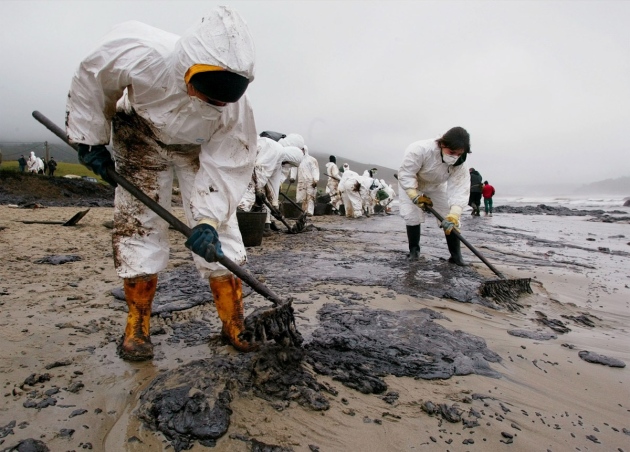http://www.platts.com/latest-news/oil/houston/bp-has-record-11-deepwater-rigs-running-in-gulf-21576914
Houston (Platts)–5May2014/414 pm EDT/2014 GMT
Four years after the Macondo oil spill, BP has 11 operated rigs running in the US Gulf of Mexico, the most the company has ever had there at one time, BP America’s CEO said Monday.
BP will spend $10 billion over the next five years in the deepwater US Gulf, which amounts to about 10% of its worldwide exploration and production budget and makes the company the largest investor in that arena, said John Minge, who is also BP America’s chairman and CEO.
“Our business is back; it’s strong and it’s gaining momentum,” Minge said. “It wasn’t long ago when the common belief was that the region was played out, that deepwater wasn’t going to work and it was better to head off to other places. But we had [employees] who said there’s more there, and convinced the leadership to invest further.”
Minge was enthusiastic over energy reforms in Mexico that could lead to new opportunities for the company in that country, particularly in the upstream deepwater.
Mexico’s so-called “secondary legislation” on energy reform– the fine print and terms — was sent to the Mexican Congress last week for approval later this year. The first bid round is expected in mid-2015.
“We’re excited about developments in Mexico, particularly offshore,” he said at the opening of the Offshore Technology Conference in Houston. “We think the resource base will be similar to what we’re exploring on the US side of the border.”
Not only is BP the largest investor in the deepwater Gulf of Mexico, it also is the largest leaseholder there, with about 620 blocks, Minge said. The company has explored in waters of 1,200 feet deep or greater since the mid-1980s.
On April 20, 2010, the BP-operated Macondo deepwater well offshore Louisiana blew out, causing the US’ largest offshore oil spill. As a result, deepwater exploration came to a virtual standstill for about nine months while the federal government formulated and implemented stricter offshore regulation.
Moreover, in late 2012, the US Environmental Protection Agency imposed a Macondo-related ban on the award of federal contracts to BP, including US Gulf leases. As a result, BP sat out three subsequent federal lease sales, although it reached a settlement with the EPA just days before the most recent sale in March. As a result, the company participated in that sale where it was apparent high bidder on 24 of 31 blocks.
BP ‘READY TO GO’ IN MEXICO
BP has four major production hubs in the US Gulf: Thunder Horse, Atlantis, Mad Dog and Na Kika. It has also made three ultra-deep Paleogene discoveries in recent years, sited largely in the Keathley Canyon area of the US Gulf: Kaskida, Tiber and last December, Gila. The Paleogene is sited in the remote southwest US Gulf in waters that can be more than a mile and a half deep and at total depths more than six miles below the seabed.
Among BP’s 11 deepwater rigs are three Thunder Horse alone, according to federal offshore records. The company is also drilling a wildcat at Keathley Canyon block 57 in 4,065 feet of water. Government records show BP procured the lease in 2003 for a nominal $500,000; it now has a 62% stake, while Brazil’s Petrobras has 20% and ConocoPhillips has 18%.
Owing to what Minge called pioneering technologies BP has developed to allow better deepwater reservoir imaging, data collection and recoveries, the company expects operating cash flow from the US Gulf “to grow to 2020 and beyond,” he said.
BP also has a minority stake in the Shell-operated Perdido Hub, which produces some of the deepest and most remote offshore discoveries in the world. The hub, offshore Texas, is just a handful of miles from Mexican waters, where the ultra-deep Perdido Fold Belt reservoir also spans that country’s offshore. Mexican state oil and gas company Pemex has drilled some wells there and global oil companies may be able to bid on blocks in the area as early as next year. They will also be able to joint-venture with Pemex on the company’s tracts there.
Minge said he believes Mexico “will absolutely compete for capital” within BP.
“We’re ready to go if [Mexico is] ready to have us,” he said.
–Starr Spencer, starr.spencer@platts.com –Edited by Richard Rubin, richard.rubin@platts.com
Special thanks to Richard Charter

